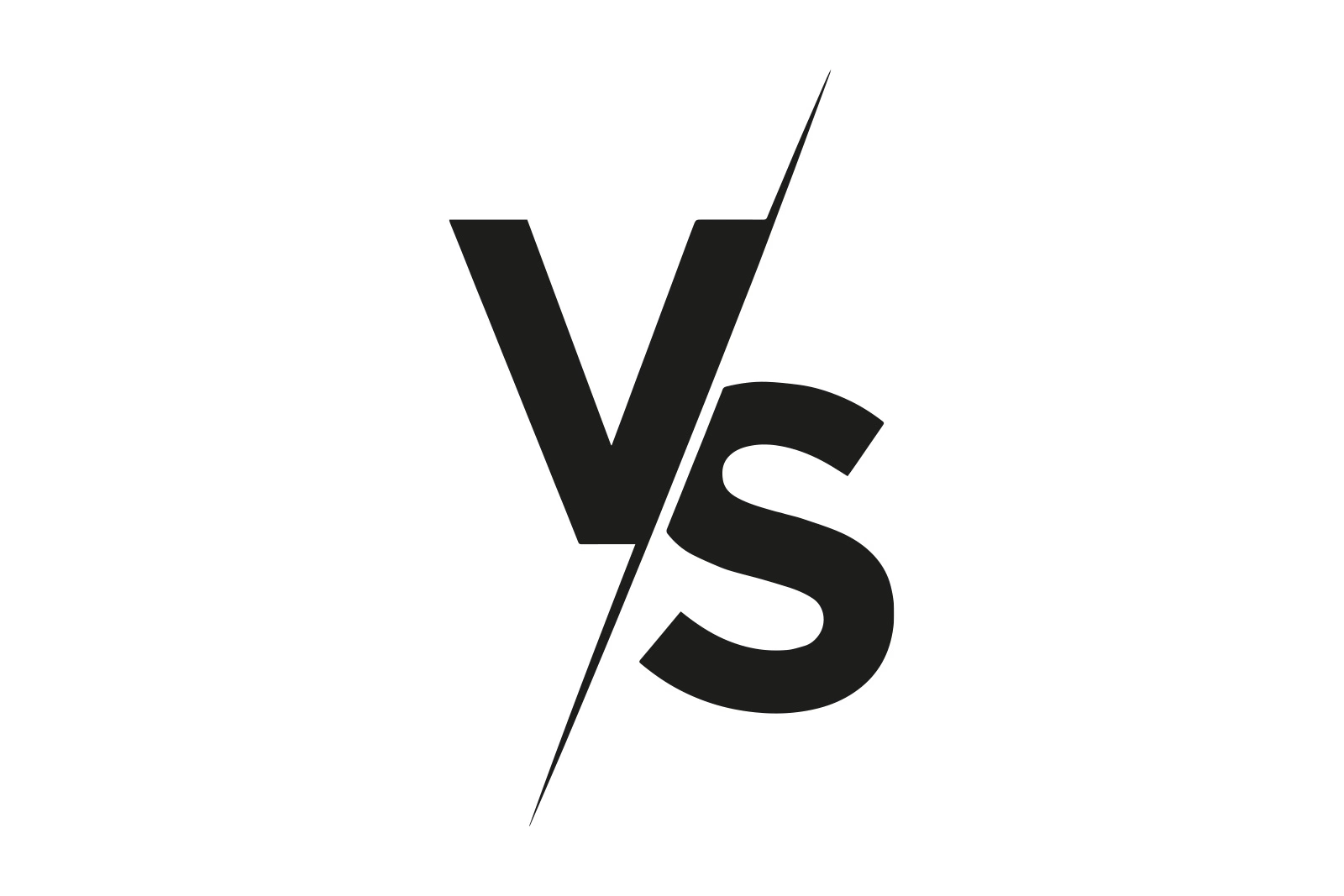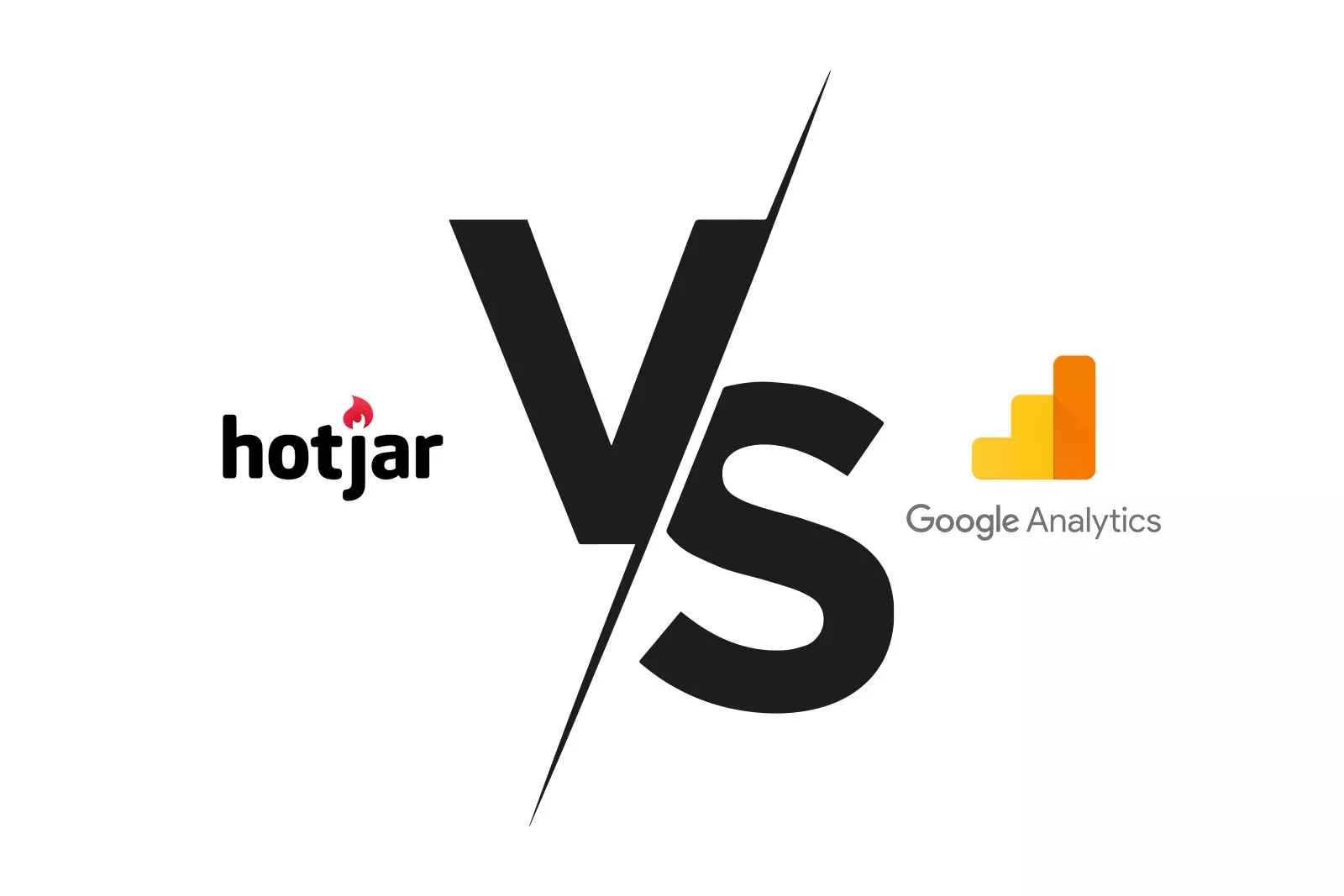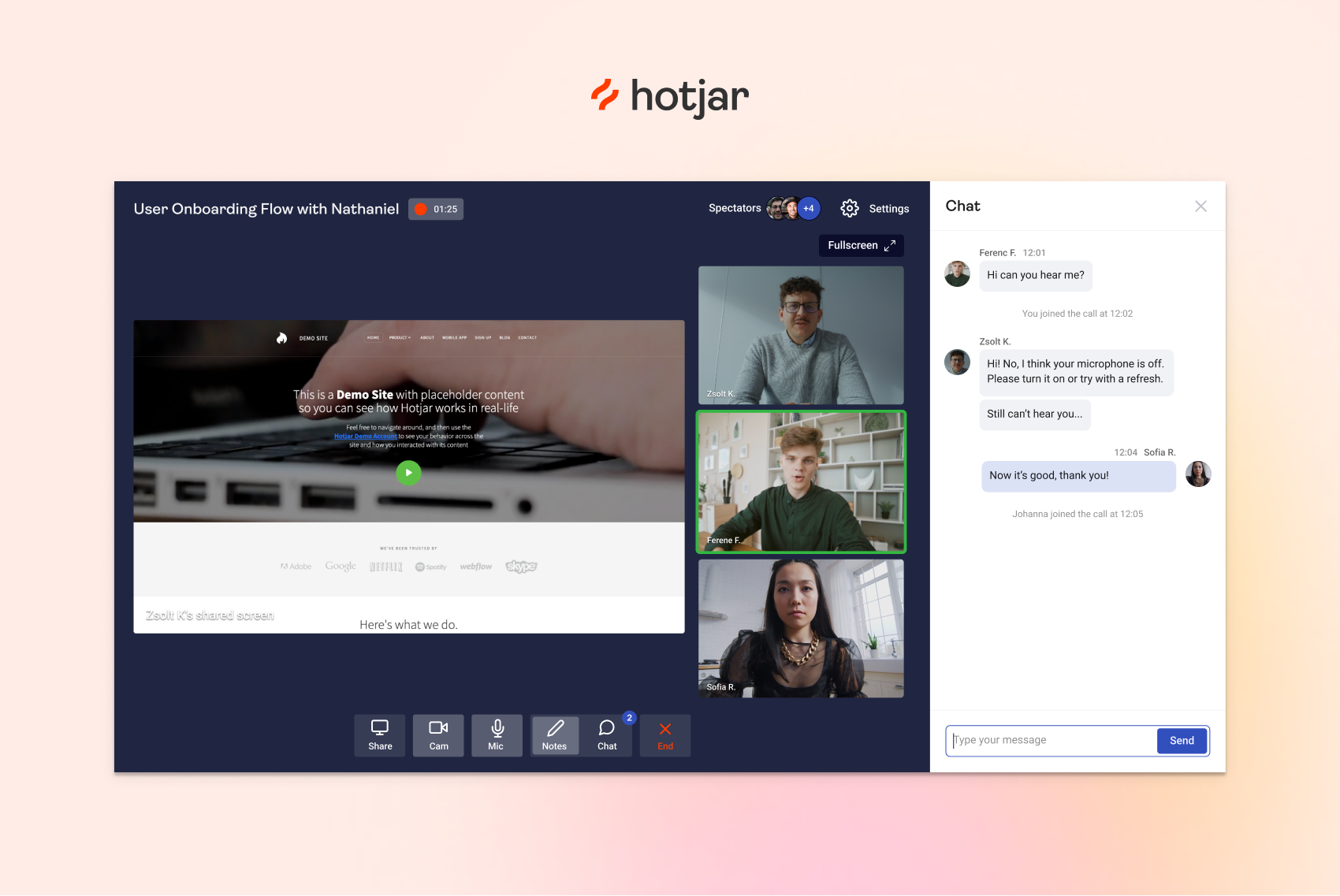As an online business owner, you must know how your users interact with your web app, landing page, website, or...
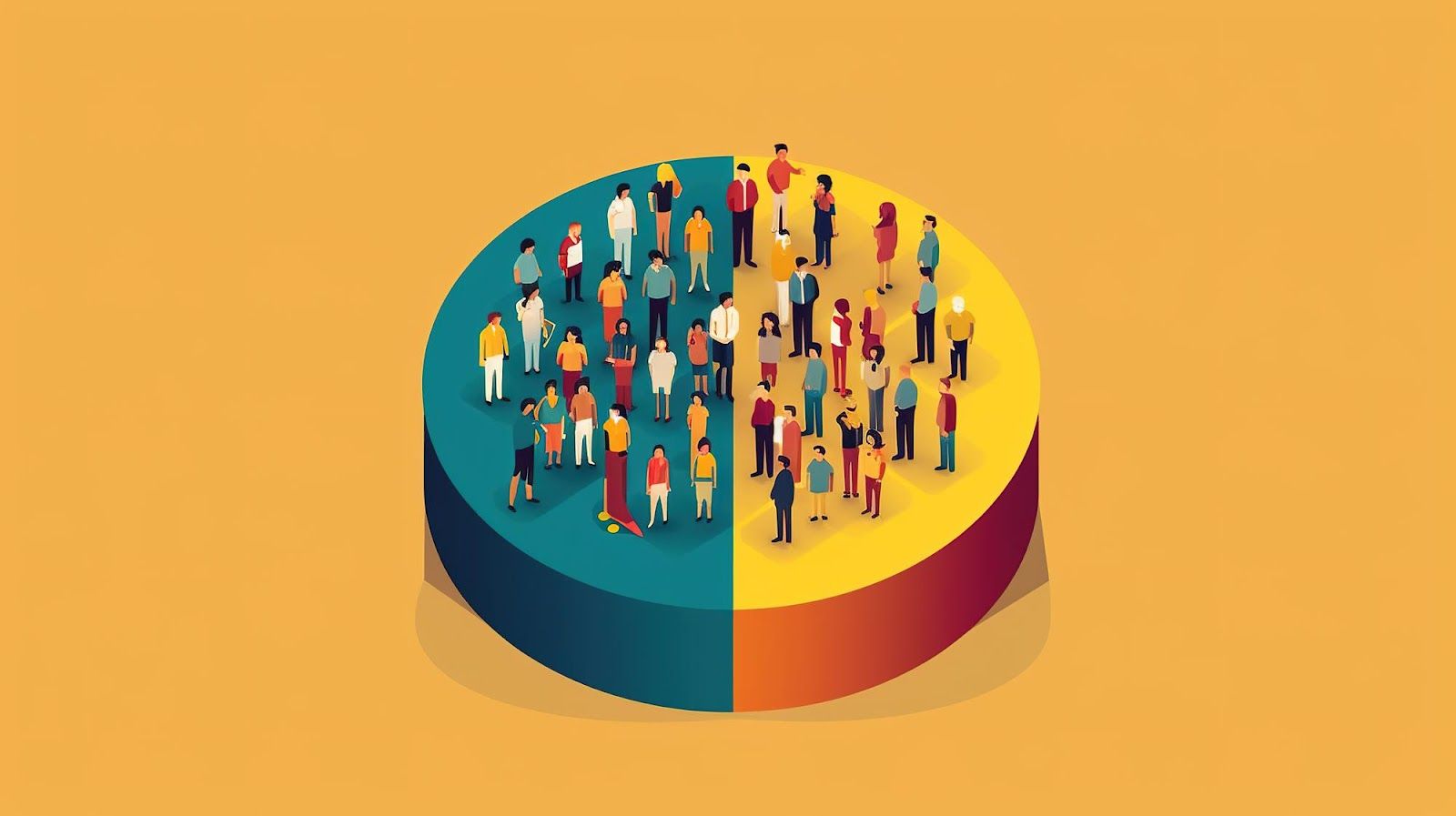
A Beginner’s Guide to Psychographic Segmentation
Psychographic segmentation tells you how you can connect with your audience groups and maximize your conversions.
What motivates your customers to buy? What type of marketing campaigns are they most likely to respond to? What psychographic traits can make them hate or love your brand? Psychographic segmentation answers all these questions and more.
In this guide, we’ll introduce you to psychographic segmentation, explore the different variables involved, and explain how you can apply this research method to perfect every marketing campaign.
What is Psychographic Segmentation?
Psychographic segmentation takes marketing to a whole new level and dives deep into what really makes consumers tick. It’s not just about the surface-level stuff like how old they are, whether they’re male or female, or how much money they’re making. Here are some psychographic examples.
Instead, it’s about getting to the heart of their personalities, figuring out what they value in life, and understanding their attitudes, hobbies, and lifestyles. It focuses on figuring out why people lean towards certain products or brands, why they shop the way they do, and why some ads just click with them.
While other methods, like demographics or where people live, can tell you a lot, they don’t get to the crux of what drives a person’s buying decisions. Psychographic segmentation zeroes in on the internal stuff—the motivations, how people see themselves and their place in the world, and what they’re aiming for.
With a deep understanding of these psychographic segments, companies can craft their marketing messages to hit right where it counts and resonate with their target audience on a personal level.
What Are Psychographic Segmentation Variables?
Psychographic segmentation variables add depth, flavor, and personality to your marketing strategies. Let’s break down what each of these variables brings to the table:
Personality Traits
Think of personality traits as the core of what makes each person unique. Are they adventurous or more of a homebody? Optimistic or a bit more cautious?
Understanding these traits helps brands create messages that feel like they’re speaking directly to someone rather than shouting into the void.
Lifestyle Preferences
This variable focuses on how people live their day-to-day lives. Are they health enthusiasts? Night owls? Academics?
Tailoring your approach to fit these lifestyles means your message is more likely to land in a place that resonates.
Activities, Interests, and Opinions (AIO)
Here’s where you get into the nitty-gritty of what people do for fun, what they’re passionate about, and what opinions they hold dear.
Are they DIYers, avid readers, or sports fanatics? Do they care deeply about environmental issues or education? Aligning your brand with these aspects can create a powerful sense of connection.
Social Class
The social class touches on the economic, cultural, and social layers that influence how people see themselves and their buying behaviors. In addition to income, it also includes aspirations and values associated with different social strata.
Understanding social status can help you position your products or services in a way that feels accessible and appealing to each class segment.
Attitudes
Attitudes are about people’s feelings and viewpoints toward various aspects of life, including work, leisure, and consumption.
Understanding these variables can give you valuable data to either challenge them, reinforce them, or present something that shifts them in a favorable direction for your brand.
Why Should You Use Psychographic Segmentation?
Psychographic or behavioral segmentation is a necessary step in creating an effective marketing strategy. Even if you have already created your ideal customer profile, you still have to get to know your actual target audience better and understand what they are like in real life.
Understand Your Customers’ Needs Better
Psychographic segmentation gives you a good grasp of the psychological aspects of consumer behavior. More specifically, it helps you to understand not just what your customers are buying but why they’re buying it.
This understanding goes beyond superficial traits. It allows you to uncover the underlying motivations, desires, and needs of your audience. It’s like getting inside their heads and hearts, which in turn, helps you to serve them better.
Personalize Your Marketing Messages
Personalized marketing stands out in a space bombarded with generic advertising. People aren’t interested in ads where it’s clear they are not the target market.
Even if they are, a lack of personalized marketing campaigns can make them feel like you’re casting a huge net instead of a hook meant for them and them only.
Psychographic segmentation allows you to tailor your messaging to capture the specific segments of your audience.
Whether through customized email campaigns, targeted ads, or bespoke content, speaking directly to your customers’ unique interests, values, and lifestyles makes your brand more relevant and appealing to them.
Improve Customer Engagement
When your marketing messages hit the right chord, user engagement naturally follows.
By maximizing psychographic segmentation, you can create content and campaigns that are more engaging and interesting to your audience—so much so that they’re bound to click, like, or comment.
This leads to higher interaction rates across your marketing channels, be it through social media likes and shares, increased website visits, or more participation in promotions and events. Essentially, you’re creating a conversation that your customers want to be part of.
Maximize Funnel Conversions
Funnel conversion is the ultimate goal for marketing campaigns, and your efforts to increase personalization and engagement contribute to it.
Psychographic segmentation sharpens your marketing funnel by making sure that the messages and offers your potential customers receive are highly relevant and compelling to them.
This relevance boosts the likelihood of conversions at every stage of the funnel, from initial awareness to final purchase, by aligning your value proposition with their psychographic profile.
Promote Brand Loyalty
Finally, when customers feel understood and valued by a brand, their loyalty deepens.
Psychographic segmentation enables you to continually align your products, services, and messaging with the evolving preferences and expectations of your audience.
Ongoing relevance among your target market fosters a strong emotional connection with your brand. This turns casual buyers into loyal advocates who are more likely to repeat purchases and recommend your brand to others. Remember, word-of-mouth marketing is the best kind!
How to Collect Psychographic Segmentation Data
Psychographic data can come from many different places. Here are a few examples:
1. Surveys and Questionnaires
Surveys and questionnaires are the main part of market research. They’re direct, versatile, and can be customized to collect the information you need about your audience’s psychographic characteristics.
Plus, they’re easy to conduct on a large scale and aren’t that expensive compared to other psychographic market segmentation methods.
To get the most out of them:
- Craft Insightful Questions: Ask about interests, hobbies, values, attitudes, and lifestyle choices to get a clear picture of the person behind the responses.
- Make It Easy and Engaging: Keep it short, sweet, and visually appealing to encourage completion. Offering incentives, such as discount codes or freebies, can also increase response rates.
- Use Open-Ended Questions: While yes/no questions are easy to analyze, open-ended questions can provide richer, more nuanced insights into the five psychographic segmentation variables.
2. Customer Interviews and Focus Groups
Interviews and focus groups allow you to dive deeper into your consumers’ minds and explore their attitudes, feelings, and opinions in more detail.
Here are a few helpful tips:
- Encourage Open Discussion: The less structured, conversational approach helps reveal deeper customer insights than surveys might miss.
- Look for Non-Verbal Cues: Body language and tone can often tell you more about a person’s true feelings than their words.
- Select Participants Wisely: Make sure your target groups or interviewees are representative of your target audience for accurate insights.
3. Web Analytics
Your website is a gold mine of psychographic data, revealing not just who visits but how they interact with your content.
Remember to:
- Analyze Behavior Flow: Understand how visitors navigate your site, which pages they linger on, and where you lose their interest. Interactive heat maps and session recordings are great tools for this.
- Track Engagement Metrics: Look at what content generates the most engagement, such as comments, shares, and time spent on the page.
- Segment Users: Use analytics to segment visitors based on their behavior, which can be indicative of their interests and preferences.
4. Social Media Analytics
If a good chunk of your target audience spends a lot of their time on social media, using social media analytics is a no-brainer. Psychographic and demographic data from Facebook, Instagram, LinkedIn, and other platforms can supplement your current customer personas.
Here’s what to do:
- Monitor Interactions: Pay attention to which posts your audience engages with most, what they share, and the conversations they’re having.
- Listen to the Conversation: Tools like social listening can help you catch unfiltered opinions and discussions about your brand and relevant topics.
- Analyze Demographics and Interests: Most social platforms offer analytics that provide insights into the interests, purchasing habits, and preferences of your followers.
What to Do With Psychographic Data
Collecting psychographics can be a tedious process, but it’s just half of the work. What you do with that data is much more important. Of course, this will depend on your industry and the type of business you have, but in general, the application of psychographic segmentation can include:
- Refining or developing products and services that speak directly to the desires, needs, and lifestyles of your target segments.
- Tailoring your campaigns to reflect the language, tone, and values that your research shows will resonate most strongly with each segment.
- Creating highly targeted ads that speak directly to what matters most to them.
- Customizing the user experience on your website or app.
- Tracking emerging trends and shifts in consumer behaviors and attitudes.
- Making broader business strategies, including product development, customer service, and even choosing business partners or sponsorships that align with your audience’s values and interests.
Psychographic Segmentation Examples
The most successful companies use psychographic segmentation to keep their target market engaged and loyal. Take a look at these real-life psychographic segmentation examples:
Nike
Nike targets consumers who value athleticism, health, and fitness. Their marketing often features inspiring stories of perseverance and achievement, resonating with individuals who see athleticism not just as a hobby but as a core part of their identity.
Apple
Apple focuses on consumers who appreciate innovation, design, and simplicity. Their marketing emphasizes sleek design, ease of use, and a creative lifestyle, appealing to tech enthusiasts and creative professionals alike.
Patagonia
Patagonia targets environmentally conscious consumers who value sustainability and outdoor activities. Their marketing and brand messaging focus on environmental conservation, appealing to customers who prioritize eco-friendly products and practices.
Spotify
Spotify uses psychographic segmentation to target music enthusiasts and podcast listeners who value personalization and discovery. Their playlists and recommendations are tailored to individual tastes, appealing to users who see music as a way to express their identity and mood.
Master Psychographic Segmentation With FullSession
Web analytics is often the best starting point for collecting psychographic data. The data is already there, and all you have to do is analyze it before you create marketing campaigns, re-design your website, or make other significant business changes.
However, analyzing psychographic information is easier said than done, which is why you need something like FullSession to guide you. FullSession is a powerful stack of tools that give you a deeper understanding of your target market. These include:
- Interactive Heat Maps: Get a visual on what your web visitors are engaging with or otherwise ignoring. Identify issues like dead links or confusing layouts.
- Session Recordings and Replays: Watch exactly how your users are interacting with your website. This can help you pinpoint frustration points and highly performing elements.
- Customer Feedback Tools: Gather instant feedback from your web visitors to supplement your quantitative and qualitative data.
- Market Segmentation and Filtering Tools: Perform psychographic and demographic segmentation to see how your current marketing efforts are working and who they work the best for.
FullSession Pricing Plans
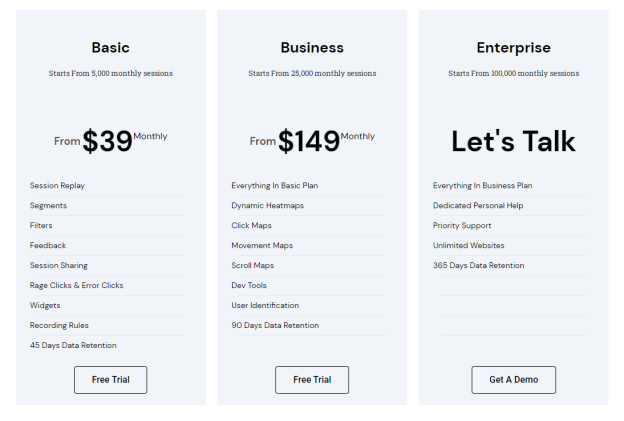
The FullSession platform offers a 14-day free trial. It provides two paid plans—Basic and Business. Here are more details on each plan.
- The Basic plan costs $39/month and allows you to monitor up to 5,000 monthly sessions.
- The Business plan costs $149/month and helps you to track and analyze up to 25,000 monthly sessions.
- The Enterprise plan starts from 100,000 monthly sessions and has custom pricing.
If you need more information, you can get a demo.
Install Your First Web Analytics App Right Now
It takes less than 5 minutes to discover your psychographic segments with FullSession, and it’s completely free!
FAQs About Psychographic Segmentation
Isn’t psychographic segmentation just for big brands?
Not at all! Businesses of all sizes can—and should—leverage psychographic segmentation to deepen customer relationships and drive engagement.
How often should I collect psychographic data?
Regularly. As your audience evolves, so should your understanding of them. Think of it as an ongoing conversation.
Can I combine psychographic segmentation with other types?
Absolutely. Combining psychographics with demographic or geographic segmentation can provide a more three-dimensional view of your audience.

